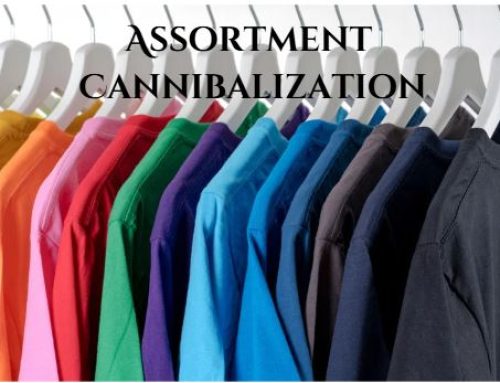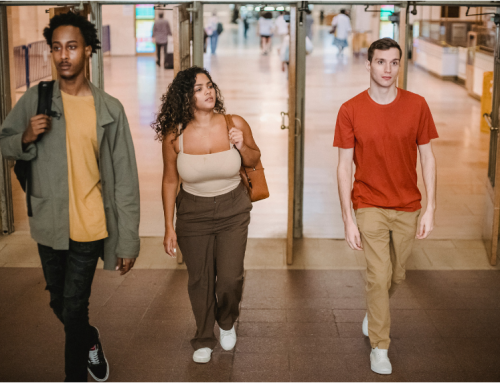It’s Easier to Keep a Customer Happy Than to Recover Them After a Negative Experience
This has always been true from a retail buying and planning perspective. But it’s even more critically important now that customers have an unprecedented number of options when it comes to spending their hard-earned money. Shoppers are increasingly voting with their wallets, rewarding the retailers that make them happy and punishing the ones that fail to meet their expectations.
A recent survey gives us insight into what makes customers happy – and unhappy – when shopping in stores and online.
In-Store Shopping: The Importance of Interaction
When shopping in stores, customers appreciate the ability to interact with the merchandise. Shoppers want to touch and feel products and try them on. However, frustrations arise when customers cannot find the style or size they’re looking for. This frustration goes beyond just a missed sale – it feels like wasted time. For example, many shoppers may have driven to the store, searched the racks, and waited for assistance, only to leave empty-handed.
According to a recent Wall Street Journal article, many retailers are exacerbating this problem by reserving certain sizes exclusively for e-commerce. This leaves stores with incomplete size runs, forcing shoppers to either leave disappointed or make their purchase online, if they’re willing to do so. To prevent this, retailers should align store inventory with actual demand, buying to size profiles by class. By doing so, they can ensure customers find what they need in-store, enhance the shopping experience, improve conversion rates, and build long-term customer loyalty.
See also: Why Do I Need Assortment Planning?
The Convenience of Online Shopping, But Not Without Its Frustrations
Online shopping addresses many of the frustrations found in physical stores. Shoppers enjoy the convenience of shopping from home and selecting from an endless aisle. Free shipping and the ability to quickly compare prices are also major benefits.
However, online shoppers face significant challenges. The inability to interact with merchandise is a top frustration. Shoppers must rely on reviews when they can’t see or feel the product. Additionally, the lack of a “try it on” option for apparel has led to a significant increase in returns, with online retailers experiencing return rates three times higher than brick-and-mortar stores.
Even though the purchasing process online is often more convenient, fulfillment wait times still frustrate customers. Surveys show that while online shoppers are unwilling to pay more for faster delivery, they are dissatisfied with the current fulfillment timelines.
The Problem of Too Many Similar Choices: Decision Paralysis and Product Cannibalization
Another frustration for shoppers – both online and in-store – is excessive similar product choice. When retailers offer too many similar options, it can lead to “decision paralysis,” overwhelming customers, and making decision-making harder. This often results in shoppers not choosing at all.
Three Key Retailer Challenges to Address
Essentially, there are three critical issues retailers need to address across all platforms:
- Reduce Time Investment: Shoppers today value their time more than ever. Online, this means improving fulfillment speed. In stores, it means easing bottlenecks such as long checkout times and ensuring inventory is stocked to meet demand.
- Tailor Assortments to Customer Needs: Enabling customers to interact with products is essential. This can be achieved by ensuring the right sizes are included in the right assortments based on customer profiles. By tailoring assortments to specific customer types, retailers can make sure they meet the unique needs of their audience and improve the overall shopping experience.
- Avoid Product Cannibalization: Retailers need to ensure that offering too many similar products across other classifications hurt sales. An assortment planning tool can provide visibility into the entire product mix and help identify potential overlaps.
See also: Attribute Goal Setting in Assortment Planning helps Prevent Cannibalization in Retail
What Can We Learn?
Your customer’s most valuable asset is their time. When you waste a customer’s time, you risk losing them to a competitor.
Every time a customer chooses to do business with you, they make a personal investment of their time. And that’s why their experience is so important. When an in-store customer can’t find the style or size they’re looking for, the consequences go beyond the transaction.
They might have driven for 20 minutes to get to the store, found parking, navigated the mall, sifted through your racks, and waited for assistance, only to be told their time was wasted. It feels personal, and that’s why customers are unforgiving when they don’t get what they want.
This is why assortments matter. The more likely a customer is to find the style, size, or color they want, the better their experience will be. This, in turn, improves customer retention. It only takes a few disappointments for customers to learn that a store never has what they’re looking for.
Stores still have a lot to offer customers, but when assortment is neglected, you risk losing ground to competitors. The key is combining selection, a tactile experience, and instant gratification – that’s the recipe for a satisfying customer experience.






















